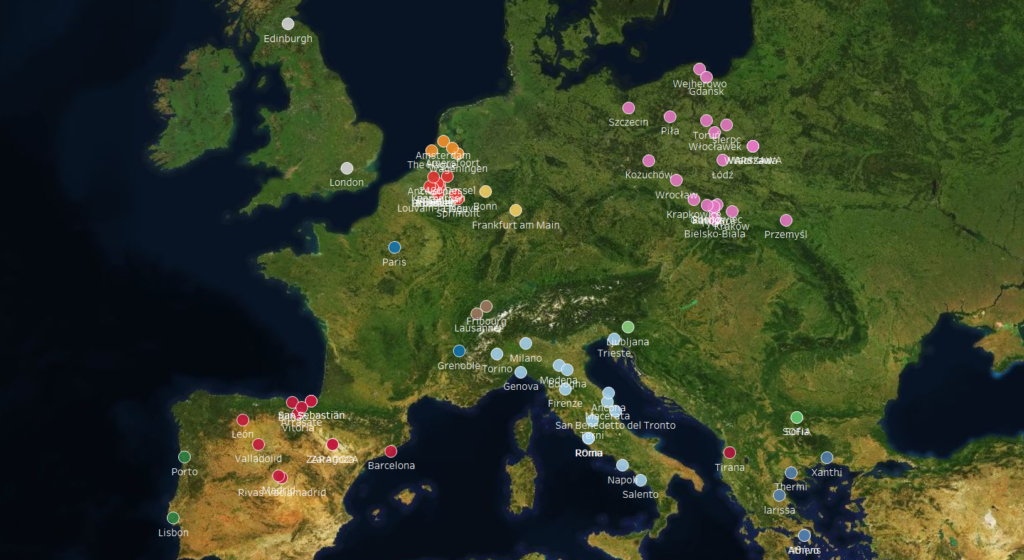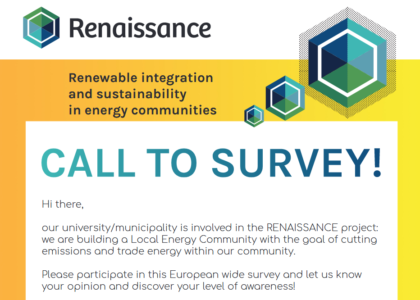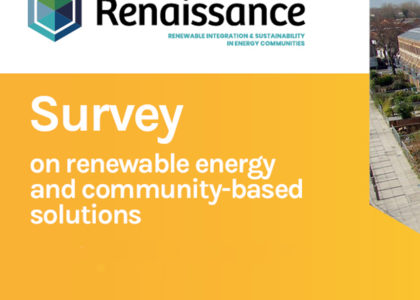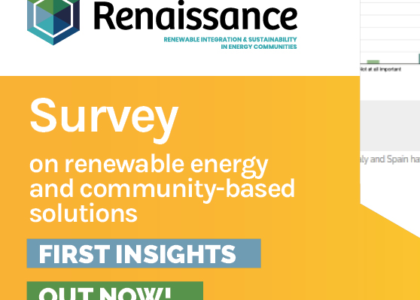The full Glossy Report of the survey results is finally available on our website’s resources section! The RENAISSANCE survey on renewable energies and community-based solutions was initially launched in April 2020 and collected more than 150 answers from all over Europe and beyond, involving respondents of all ages. In May 2020 an intermediate article presenting first insights from the survey was already published, introducing the structure of the Survey and its main objectives.

Survey objectives and structure
Within the RENAISSANCE project context, in addition to technical and economic aspects, it is deemed essential to include an analysis of related social aspects. The socio-economic context and the quality and quantity of information received strongly influence the acceptance of clean technologies and measures, including renewable energy generation technologies. Technologies that are technically and economically feasible in a given context may not be successfully implemented due to social resistance, lack of awareness of the technology, low engagement and so forth. The RENAISSANCE survey on social acceptance of potential end-users (pilot sites inhabitants, stakeholders, further energy market actors involved) has a two-fold objective: it allows identifying end-users’ needs and concerns while also offering an initial set of information which can guide them through the energy transition process.
The survey Report, as the survey itself, is divided into four sections addressing:
i) AWARENESS the general awareness of the environmental issues and the regulatory context
ii) LOCAL, NATIONAL and EUROPEAN POLICIES
iii) PERCEIVED RISKS
iv) PERCEIVED BENEFITS
v) BUSINESS MODELS
vi) SOCIAL CONTEXTS and the factors influencing the decision making
vii) ACCEPTANCE of emerging business models and technologies.
Contents’ preview
Rebecca Hueting and Alessandra Tedeschi presented a first preview of the Glossy Report during the last ESG event in December. The preview focused on the perceived risks and benefits of switching to renewable energy providers or installing renewable energy production systems, be it an individual or collective asset . Furthermore, the two authors shortly presented the correlation among awareness levels and the knowledge about recent directives and available incentives.
The final section of the Survey Report contains the most interesting results on future energy market scenarios. From a project research perspective such initial set of insights about most accepted business models allows the whole RENAISSANCE Consortium to better understand what is the end-users attitude towards Energy Communities. To this aim, a short explanation about traditional and emerging business models was given and a comparison between their main characteristics was offered in table view. To better understand end-users’ acceptance and behaviours, respondents’ answers were evaluated in segments: we looked for main deviations depending on age, geographical area, income and education level, and density of the built enviroment. In the infographic below a dotted-line chart shows the respondents’ evaluation of four potential scenarios for the future energy market where exclusively local renewable energy is produced, stored or traded. In this case, respondents are divided both by age and by population density of surrounding areas.
Click on the button below to download the full Survey Report:
Explore all our most recent resources published on our website, including press releases, deliverables, interactive contents and scientific papers:



